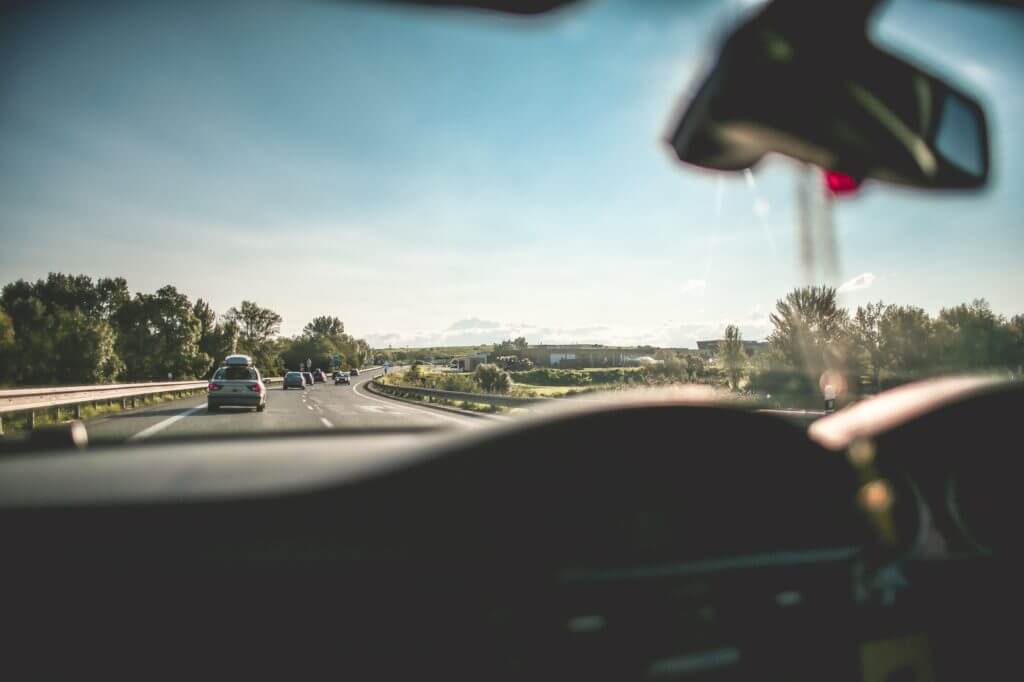Department for Transport figures in 2024 showed there were 70% more deaths on rural roads than urban highways, despite there being fewer than half the number of collisions.
How can you ensure you stay safe while driving on country roads and what are the main dangers to look out for in rural areas?
What are the different types of rural roads?
A rural road is a countryside road, based away from a town or city. It will often see fewer vehicles driving it but it can have tight turns, poor visibility and other potential hazards.
In 2023, the RAC Foundation and safety consultant Agilysis identified four main types of rural road in the UK:
- Principal roads – These are generally wide, fast moving and flat. They can sometimes be dual carriageways, and are often located close to populated areas.
- Country roads – Narrower, sometimes undulating, single-carriageway with moderate traffic levels.
- Neighbourhood roads – These roads run through rural communities.
- Winding roads – These are narrow single carriageways, mostly unclassified and sometimes single track. They are generally low speed with little traffic.
How can I stay safe while driving on country roads
Despite many country roads having a speed limit of 60mph, it’s important to remember that this is not a target. There are potentially blind corners, blocked views and tight spaces to pass other cars to negotiate so it’s important to remain calm and drive safely and respectfully.
- Plan appropriately – If you know you will be driving through some country roads, take this into account when planning what time you’ll leave. Allow yourself extra time if you need to.
- Adjust your driving to suit the road – If there are narrow lanes and your view is blocked, drive at an appropriate speed. Take things slowly and look out for other road users, animals and blockages.
- Slow down if you need to – Driving on country roads can be different to in towns and cities. Some drivers may be overconfident and perhaps complacent, driving as they normally do, while new drivers can be nervous of this new experience and sometimes a little naive. Try to be understanding and respectful to other road users.
- Factor in external conditions – Ice, rain, fallen trees and low-level sun can all cause disruption to your journey. Prepare appropriately and drive at a safe and sensible speed.
What hazards can I expect when driving in rural areas?
Keep an eye out for pedestrians, pets and potholes.
With their remote locations, many people may have no other option to walk on the road. While the majority will walk towards you on the right-hand side, some may not be prepared so drive slowly around them, offering ample space.
You could also come across farm vehicles like tractors and wildlife including horses, sheep, cows, deer and even ducks with their ducklings. If you get stuck behind a group of animals, be aware that Rule 214 of the Highway Code states:
‘If a road is blocked by a herd of animals, stop and switch off your engine until they have left the road’.
Animals can be unpredictable so approach with caution and try not to startle or dazzle them. If you see some on a narrow road, slow down and stop if necessary, letting them move at their own pace. Switch on your hazard lights to let other drivers know what you are doing.
If there are fewer animals or there’s a farm vehicle, cyclist or pedestrian, you can overtake – but only when it is safe to do so and at a sensible speed. Drive slowly, use your indicators and offer them plenty of room as you make your way around.
It may be worth familiarising yourself with the UK’s animal road signs to gain an idea of what you could potentially be coming across. Other non-animal signs to look out for include ones indicating low bridges, narrow roads and cattle grids.
If you come across some heavy duty farm machinery, bear in mind that many farmers will appreciate they are delaying you. They may pull over to let you overtake but only when it is safe to do so.
How fast can you go on a country road?
As mentioned above, the speed limit on rural roads is often 60 miles per hour (indicated by a sign with a white circle and black diagonal line) but it is advisable to drive slower. Stopping distances can be greater due to the conditions of the road as well.
Give yourself enough time to react and respond to each twist, turn and unexpected movement from other road users. Try to be cautious, especially around bends, as the appropriate speed can easily be misjudged.
In 2023, the UK government confirmed:
- 60% of all serious and fatal collisions involving young male drivers happen on rural roads.
- Speed kills and injures 54 young people every week in the UK.
- Speed accounts for 1 in 4 fatal collisions but considered the least risky and most acceptable behaviour when it comes to breaking driving rules
Visit our blog post What are the UK speed limits? to find out more.
Can I get fined for breaking the Highway Code on a rural road?
The short answer is yes. Many of the rules featured in the Highway Code are legal requirements when it comes to driving and have appropriate penalties.
Just one example is speeding fines remain the same as if caught on other roads – a fixed penalty of £100, 3 penalty points and potential disqualification. You may also be offered the opportunity to attend a speed awareness course.
Any other advice for driving on a country road?
- Rural roads can be isolated with little in the way of traffic, signal or reception. This means it can take the emergency services longer to reach a destination when needed.
- Take extra care when driving at night. Use your full beams to increase visibility ahead of you but go back to dipped headlights the moment you see another car approaching.
- Stay alert at all times. Use your horn on blind bends, judge the width of your car to avoid hitting others and look out for uneven surfaces.
- There is no priority at unmarked junctions. It’s down to common sense.
- If there’s a space on your side of the road that you can pull into to let a car pass, use it. Hopefully others will do the same for you if there’s one on their side of the road – but prepare for any eventuality.
- Do your basic maintenance checks before heading off – fluids, brakes, tyres and lights.
- Avoid overtaking unless absolutely necessary – and stay well within the speed limit.
The most important thing to remember when driving on country roads is to have patience. They can be unpredictable but also a lot of fun with their views. If you don’t fancy driving on country roads yourself, buy temporary car insurance to let someone with more confidence take the wheel and help you get where you need to go.
Available from one hour to 28 days, this short-term cover is flexible to your needs and also fully comprehensive, meaning the driver can put their mind at ease. Your no claims discount will also be unaffected, even if the worst happens.
Sources
https://www.bbc.co.uk/news/articles/c98l3gppnrgo
https://www.rac.co.uk/drive/advice/road-safety/driving-on-country-roads-your-complete-guide/
https://www.brake.org.uk/get-involved/take-action/mybrake/knowledge-centre/road-design/rural-roads
https://www.theaa.com/driving-school/driving-lessons/advice/country-roads-for-new-drivers
https://www.passmefast.co.uk/resources/driving-advice-and-safety/driving-well/country-driving
https://www.racfoundation.org/media-centre/what-is-a-rural-road
https://www.pacts.org.uk/rural-roads-need-safe-speeds/
https://www.theaa.com/driving-advice/keeping-young-drivers-safe-on-rural-roads
https://mocktheorytest.com/resources/animal-road-signs-from-uk/
Frequently Asked Questions
What should I do if I encounter a slow-moving farm vehicle on a narrow country road?
You’re likely to encounter farm vehicles while driving on rural roads. Give them plenty of space and overtake only when it is clear and safe to do so.
How can I prepare my car for a long drive on rural roads?
Check your brakes, lights, fluids and tyres before heading off on your journey. Drive safely at a slow and steady speed, keeping an eye on the road for any potholes and obstructions.
What should I do if I break down on a rural road?
The first thing to do is remain calm. Put your hazard lights on, park up as far to the left as possible and get out if you can. Try to leave the car via the passenger door and contact your breakdown provider as soon as possible. Explain the reasons why you’ve broken down and wait as they send someone to repair your vehicle.
If they’re unable to fix your vehicle on the road, they’ll either tow you to your nearest garage or take you to a destination of your choice.
If you have no signal, stay in a safe place with your hazard lights on and if possible, place a warning triangle behind your vehicle. Hopefully, a fellow road user will be able to assist you.
Call 999 immediately if someone is hurt.
Are there any specific rules about parking on rural roads?
There do not tend to be any specific rules prohibiting parking on country roads, unless there are local regulations in force.
Parking on verges or pavements is generally permitted unless you cause an obstruction, damage to the verge or it’s otherwise deemed dangerous. Local laws and regulations can impose restrictions. Do not park on anyone’s private property without permission.




